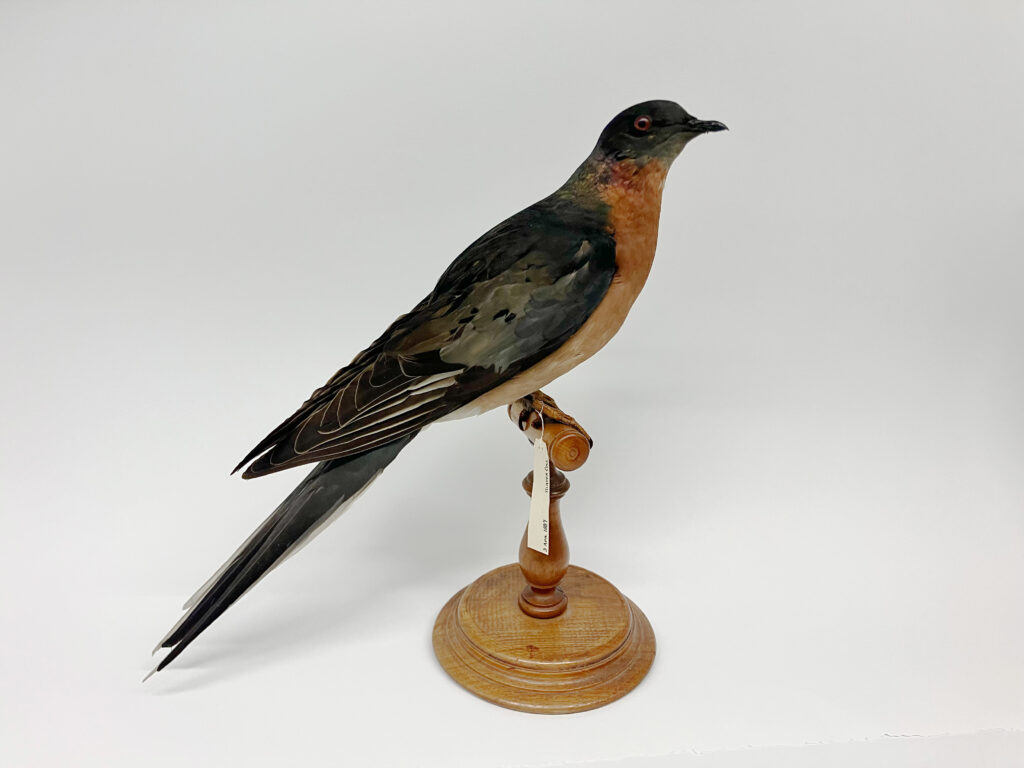
Passenger Pigeon from the collection at the Museum of Comparative Zoology, Harvard University
“Flocks of wild pigeons this day, so thick they obscure the light.”
– March 8, 1631. Medford.
“Upon the eight of March from after it was fair daylight, until about eight of the clock in the forenoon, there flew over all the towns in our plantations, so many flocks of doves, each flock containing many thousands and some so many that they obscured the light, that it passeth credit, if but the truth should be written”
-Thomas Dudley, Governor of the Massachusetts Bay Colony, in a letter written March 12, 1630.
I doubt that our 17th century ancestors could have possibly imagined that the Passegner Pigeon could ever possibly go extinct. But what began as hunting for food continued on for over 200 more years in New England until finally this once ubiquitous species disappeared forever. By the 1860s the numbers of birds had greatly diminished, but could still be found in certain parts of the state with some regularity.
At some point between 1880 and 1890 the Passenger Pigeon became extirpated from Massachusetts, but exactly when is unknown. The date of the last remaining female is more certain, dying in captivity at the Cincinnati Zoo on 1 September 1914.
For more reading about the history of the Passenger Pigeon in Massachusetts see Edward Howe Forbush’s A History of the Game Birds of Massachusetts
